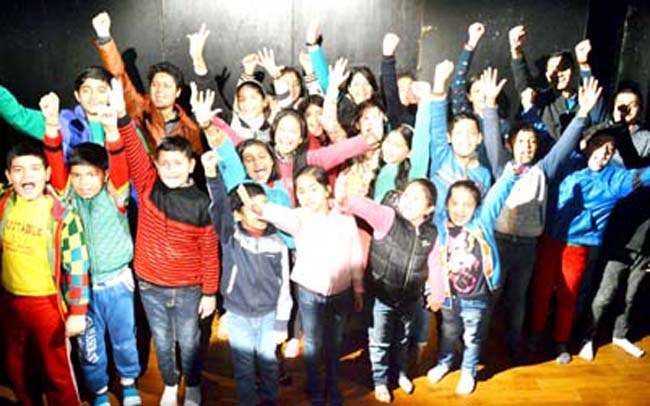Agencies
New Delhi, November 23:
With themes like gender stereotypes, women’s empowerment and social justice, children’s theatre is not just about child’s play any more.
The realisation that children, regardless of their age, are also opinion makers is being mirrored in stages big and small, say theatre veterans.
“At the ground level, in small towns and cities, almost all schools do at least one production every year as part of their annual functions. Apart from established theatre groups taking up children’s projects, there are groups that are devotedly working for and with children,” Abdul Latif Khatana, chief of Theatre in Education (TIE) Company at the National School of Drama (NSD), told PTI.
Despite a short history of 30-35 years, children’s theatre has grown rapidly with serious work happening at the grassroots level, he said.
In its early years, children’s theatre was all about enacting fairy tales and dressing children up but now the subjects have “matured” to issues like women’s empowerment, gender stereotypes and cases of social justice, he said.
Children are now considered capable of making and projecting their own opinions, a message going out through the medium of theatre.
“The earlier tradition of children’s theatre met with this strong and exactly opposite version of it. We started realising that children’s lives are not entirely different from grown ups. They have their own issues, troubles and points of views. They are capable of making opinions too. They are complete individuals, Khatana said.
One evidence of the changing scenario is the ongoing JashneBachpan international theatre festival here with over 500 artistes, young and adults, taking part in 23 theatrical productions in various languages, including Hindi, English, Assamese, Malayalam and Bengali.
One of the plays staged at the nine-day festival, which ends on Sunday, was “Puberty”, a non-verbal play from Sri Lanka’s Red Apple International Theatre Gathering, which discussed the growing up years of a girl child.
Then there was “She Stood Up”, from Chandigarh’s Wings Theatre Academy and Vivek High School, which centred around women’s empowerment and gender stereotypes.
The women’s movement has been gaining momentum in our country in the last decade, but we are still dealing with the horrors of Nirbhaya and Kathua,” said director Zubin Mehta, referring to the rape and murder of a physiotherapy intern in Delhi and an eight-year-old in Kathua in Jammu and Kashmir.
“Real empowerment should happen at a young age. It is the young girls that we need to empower to make a significant difference, the “She Stood Up” director added.
The dramatis personae of this changing scenario are youngsters like 10-year-old Yuvraj Mavi, who speaks about his aspirations and reasons for taking up theatre it all begins to come together.
“I like how you get to practice on your expressions and voice projection through theatre. I have been training since I was five and want to continue doing it in the future as well,” the youngster said.
But cinema is not for him, he said with the wisdom of one much older. He added that he doesn’t want his work “to be edited” and prefers “performing live” in front of an audience.
Jitesh Sharma, slightly older at 16 is also passionate about theatre. His journey started from a love for dance and an incidental workshop at the Hindi Akademi. And now theatre has become more of “a stubborn need than just passion”, he said.
“My parents tell me to focus on my studies and do theatre after I have finished school. But now all I want to do is theatre, and then maybe move to films. I love to be involved in the entire production process,” Sharma said.
Though there are increasing number of different types of productions — theatre for children and theatre by children — there are still some gaps.
Rajesh Bakshi of Theatre Actors’ Studio said there is urgent need to create more theatre that can connect directly with the main audience, which is children.
Despite a lot of work happening for children, we still lack works that can communicate with their psychology. We are working with children but we want them to work according to adult perspectives.
Yes, they have their own issues but they are different from those of an adult. They are not worried about their salaries or politics or the country. They are worried because their best friend isn’t talking to them, or that they didn’t finish the homework, Bakshi said.
Apart from the change in mindset of theatre directors, the genre has also grown by involving audiences — participatory theatre .
It’s a great combination of theatre and education, he added.
So what can be done to make children’s theatre more mainstream and accepted by the society?
This country is so large, so many schools and even more children, one institution or organisation cannot bring a significant change. We, as a society, need to bring policy changes, which then need to be enforced by the states, make drama and theatre a part of school curriculum, Khatana suggested.
A long way travelled and some more to go for children’s theatre, but children like Mavi are happy to be playing their parts.
The pride in his voice was as visible as the smile on his face when he said, My father told me he will come and see my play if it is at NSD. I told him, dad, I am already at NSD’.




